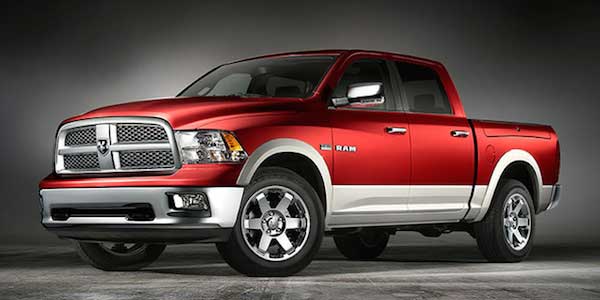
Customers may experience a MIL illumination for P1004, P2016 or P2017. Further investigation by the technician may find that DTCs are active or stored. If DTCs are present other than the ones listed above, record them on the repair order and repair as necessary before proceeding further with this bulletin.
Models: 2009 Dodge Ram 1500/2500 with 5.7L engine
Customers may experience a MIL illumination for P1004, P2016 or P2017. Further investigation by the technician may find that the following DTCs are active or stored:
P1004 – Short Runner Valve Control Performance
P2016 – Intake Manifold Runner Position Sensor Circuit Low
P2017 – Intake Manifold Runner Position Sensor Circuit High
The SRV wiring takeout was not long enough and caused excessive wear on the SRV and SRV wiring connector, resulting in a loose connection.
DIAGNOSIS:
Verify all engine systems are functioning as designed. If DTCs are present other than the ones listed above, record them on the repair order and repair as necessary before proceeding further with this bulletin.
If the above condition is present, perform the repair procedure.
REPAIR PROCEDURE:
1. Remove the intake manifold.
2. Cover intake ports.
3. Remove the short runner valve.
4. Discard one of the short runner valve bolts.
5. Replace the short runner valve. Use the SRV stud supplied with the kit in the hole located on the right side (passenger side on LHD vehicles) of the intake manifold, and use the two remaining bolts on the other locations. Torque bolts to 5 Nm (44 in-lb).
6. Measure 50 mm (1.9 inches) down from end of SRV connector and cut off the SRV connector.
7. Use the 18-gauge wires to splice in SRV wires.
NOTE: Be sure to use the shrink wrap on wires after splicing.
8. Install new SRV Connector.
9. Wrap all exposed wiring with high-abrasion tape.
10. Measure 100 mm (3.9 inches) from end of new SRV connector and install stud mount tie-strap on wire.
11. Measure 150 mm (5.9 inches) from stud mount tie-strap toward main harness and tie-strap new SRV takeout to main harness.
12. Connect stud mount tie-strap to stud.
13. Apply lock and seal adhesive on intake manifold bolts.
14. Install the intake manifold.
CAUTION: When installing the intake manifold, care should be taken not to pinch the SRV wiring under intake.
15. Erase all DTCs with scan tool.
Courtesy of ALLDATA.













